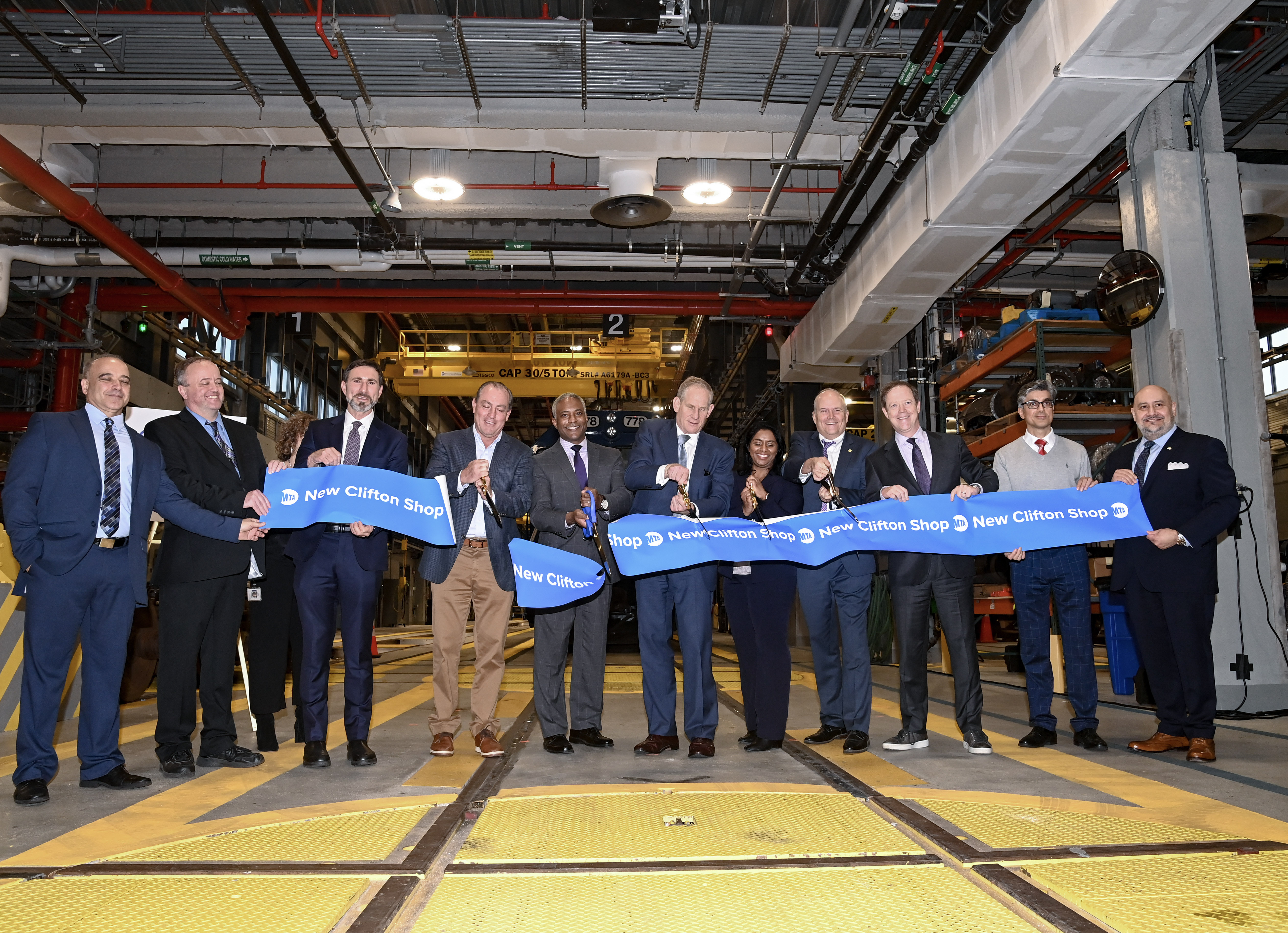New 93,220 Square-Foot Facility Houses Staten Island Railway Repair Shop and Offices; Built to Withstand Heavy Winds and Water Intrusion
Previous Space Suffered Severe Water Damage During Hurricane Sandy
See Photos from Today’s Event
The Metropolitan Transportation Authority (MTA) today unveiled its new, storm-resilient Clifton Car Maintenance Shop on Staten Island. The previous incarnation of the Staten Island Railway facility suffered extensive damage that led to months of disruption following Hurricane Sandy a decade ago, and has been rebuilt to sustain Category 2 hurricane water and wind pressures up to 110 miles per hour sustained winds, plus a three foot water surge.
The facility includes a new shop, administrative offices and support buildings. Inside the shop there are four tracks for car inspections and repairs, interior car cleaning and approved car modification programs, and an overhead lifting system for changing roof-mounted air conditioning units lifting car bodies for car trucks maintenance.
“This state-of-the-art facility will be the home base of Staten Island Railway operations and is key to delivering more reliable and resilient transit for Staten Islanders,” said MTA Chair and CEO Janno Lieber. “We couldn’t have completed this project without our partners at the U.S. DOT's Federal Transit Administration and the U.S. Department of Transportation.”
“A new Clifton Shop means Staten Island Railway cars will be maintained and repaired onsite instead of in Brooklyn,” said New York City Transit President Richard Davey. “I’m excited for riders to see more reliable and efficient service for years to come.”
“The new Clifton Maintenance Shop is a state-of-the-art, resilient facility that will serve the Staten Island Railway for decades to come,” said MTA Construction and Development President Jamie Torres-Springer. “Redesigning the shop to prevent water intrusion and withstand a Category 2 hurricane storm represents the forward-thinking approach C&D is bringing to projects across the system.”
“This shop is designed for the Staten Island Railway of the future,” said Senior Vice President of NYC Transit Department of Subways Demetrius Crichlow. “It will house the new train cars and work equipment that will lead to improved service and a more modernized system. I want to thank the team at SIR who made this possible.”
“It's been 10 years since Hurricane Sandy struck the New York metropolitan area, significantly damaging the region's transit infrastructure, including this shop, the only maintenance facility for Staten Island Railway,” said Federal Transit Administration Regional Administrator Stephen Goodman. “The culmination of our work demonstrates how we are investing in transit infrastructure and advancing key priorities. This project will reap enormous benefits for the riders of Staten Island and help them get where they need to go.”
“When Hurricane Sandy tried to knock out Staten Island and New York City, we fought back, and we have the resiliency to stand here today, and say, we're not going to let a storm knock us down again,” said Staten Island Borough President Vito Fossella. “We're very pleased that the MTA and their partners have chosen to invest in Staten Island. This project is essential to keep the system going strong and continue to be vibrant in the decades ahead."
Funding for the $165 million design-build project was allocated from the Federal Transit Administration (FTA’s) Hurricane Sandy recovery program. Other components of the five-year project include:
-
Demolition, removal and disposal of structures and systems including underground diesel.
-
Reconfiguration of tracks and switches and realignment of indoor tracks, including traction power and underground utilities.
-
Environmental work including asbestos abatement, lead abatement and underground fuel storage tanks removal.
-
Installing communications systems including clock/timekeeping, fire alarm, public address, CCTV and security systems and sprinkler and standpipe systems.
